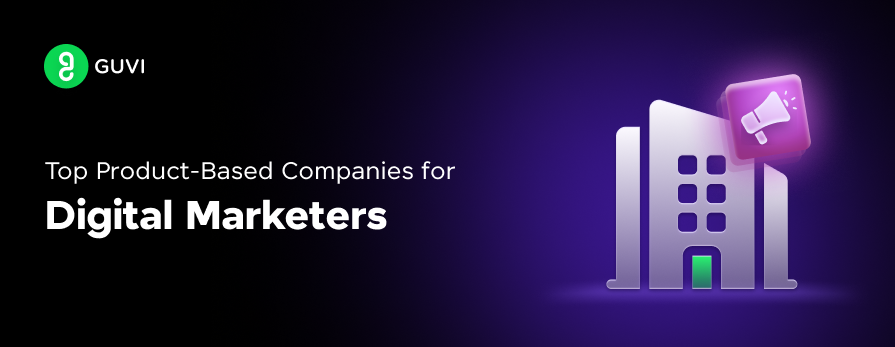
5 Important Pillars of Social Media Marketing
Mar 11, 2025 6 Min Read 7221 Views
(Last Updated)
In the vast digital marketing landscape, social media marketing stands out for its unparalleled reach, engagement, and influence. With billions of users across various platforms, mastering the art of social media marketing has become essential for businesses to thrive in today’s digital age.
But where does one begin? What are the fundamental principles that underpin successful social media campaigns? In this comprehensive guide, we’ll delve into the 5 pillars of social media marketing, equipping beginners with the knowledge they need to kickstart their digital marketing journey.
Table of contents
- Pillars of Social Media Marketing
- Strategy & Planning
- Content Creation and Publishing
- Engagement and Community Building
- Analysis and Optimization
- Social Media Advertising
- Wrapping Up
- FAQs
- What are the 5 P's of social media?
- What is the full form of SMM?
- What is SMO?
- What is the full form of PPC?
- What are the five core pillars of social media marketing?
Pillars of Social Media Marketing
According to a recent report by Forbes, Indians, on average, spend about 141.6 minutes on social media daily. Regardless of the size of the business, everyone has their own presence on social media.
To succeed in this competitive landscape, It is critical to comprehend and implement the five crucial pillars of social media marketing if you wish to succeed in the competitive digital landscape
Before we move to the next part, Gain a deeper knowledge of business analytics and digital marketing concepts. You can consider enrolling yourself in GUVI’s Business Analytics and Digital Marketing Course, which lets you gain practical experience by developing real-world projects and covering technologies including Power BI, Excel, SQL, Tableau, Data Visualization, etc.
Additionally, if you would like to explore Marketing Research Techniques through a Self-paced course, try GUVI’s Marketing Research Techniques certification course.
1. Strategy & Planning
The first step of social media marketing is to devise a solid strategy and create a social media plan for your marketing activities. Are you wondering how to create a social media strategy? Before diving headfirst into social media marketing, it’s crucial to lay a solid foundation through strategic planning.
- Define clear and measurable goals for your social media efforts, whether it’s increasing brand awareness, driving website traffic, or boosting sales.
- Identify your target audience demographics, interests, and pain points to tailor your content and messaging effectively.
- Research competitors to gain insights into their strategies, content types, and audience engagement tactics.
- Develop a content strategy that aligns with your goals and audience preferences.
- Create a content calendar to ensure consistency and organization in your posting schedule.
Read More: 8 Steps to Make an Effective Digital Marketing Plan
2. Content Creation and Publishing
Content creation and publishing are essential pillars of social media marketing, forming the backbone of engaging and impactful digital campaigns.

The Importance of High-Quality Content
Craft content that is valuable, relevant, and engaging to your audience, whether it’s informative blog posts, captivating images, or entertaining videos.
Learn More: What is Content Marketing? Types, Uses, Strategy
Types of Content
Explore various content formats, including text, images, videos, infographics, and user-generated content, to diversify your social media presence.
Content Curation Techniques
Curate content from reputable sources within your industry to provide additional value to your audience and establish thought leadership.
Also Read: The 5C’s of Effective Content Marketing: A Deep Dive
Tools for Content Creation
Utilize a range of tools and resources, such as Canva, Adobe Suite, and Unsplash, to streamline the content creation process and enhance visual appeal. Video editing software such as Adobe Premiere Pro, Final Cut Pro, and iMovie enable you to produce polished video content with ease.
Additionally, scheduling tools like Buffer, Hootsuite, and Sprout Social allow you to plan and publish your content across multiple social media platforms, ensuring consistency and efficiency in your posting strategy.
Must Explore: Top 9 AI Tools for Content Creation That You Shouldn’t Miss
Publishing Your Content
Once you’ve created compelling content, the next step is to publish it across your chosen social media platforms. Each platform has its own unique audience demographics, content formats, and best practices, so it’s important to tailor your content accordingly.
Consider the optimal posting times, frequency of posting, and platform-specific features when scheduling your content. Whether you’re sharing a new blog post on Facebook, posting behind-the-scenes photos on Instagram, or launching a live video on Twitter, ensure that your content resonates with your audience and aligns with your overall marketing objectives.
3. Engagement and Community Building
Social media is not just about broadcasting messages. It’s about fostering meaningful connections and interactions. Engagement and community building are integral components of a successful social media marketing strategy that play a vital role in driving brand loyalty and amplifying your brand’s reach and impact.
Effective Techniques for Increasing Engagement
- Prompt your audience to engage with your content by asking questions, soliciting opinions, or inviting feedback. Thought-provoking questions, polls, and surveys can spark conversation and invite participation, fostering a sense of community and dialogue around your brand.
- Craft content that resonates with your audience’s interests, preferences, and pain points. Whether it’s entertaining videos, informative blog posts, or inspirational stories, prioritize quality over quantity to capture attention and inspire engagement.
- Actively monitor your social media channels and respond promptly to comments, messages, and mentions.
- Engage in two-way conversations with your audience, acknowledge their contributions, and address their queries or concerns in a timely and personalized manner.
- Empower your audience to become co-creators of content by encouraging user-generated content. Encourage customers to share their experiences, testimonials, and creative interpretations of your brand through photos, videos, or reviews, showcasing authentic user-generated content fosters a sense of community and authenticity while amplifying your brand’s reach and influence.
Also Read: Best Digital Marketing Webinars and Workshops

Strategies for Building and Nurturing Communities
- Identify the shared interests, values, and aspirations that unite your audience and define your brand community.
- Offer valuable content, resources, and experiences that enrich the lives of your community members. Provide them with content that resonates with your audience and meets their needs and aspirations.
- Foster a welcoming and inclusive environment where community members feel valued, respected, and connected.
- Encourage collaboration, celebrate milestones, and recognize contributions to cultivate a sense of belonging within your community.
- Facilitate meaningful interactions and connections among community members through interactive features, such as group discussions, live Q&A sessions, or virtual events.
- Encourage members to share their experiences, insights, and expertise, fostering a culture of collaboration and mutual support.
You might Like: 8 Best YouTube Channels to Learn Digital Marketing
4. Analysis and Optimization
The analytics and measurement pillar of social media marketing is fundamental for evaluating the performance and effectiveness of marketing efforts across various social media platforms. It involves collecting, analyzing, and interpreting data to gain insights into audience behavior, content performance, and campaign outcomes.
This pillar serves as a compass, guiding marketers in making informed decisions, optimizing strategies, and driving continuous improvement. To make effective data-driven decisions, social media marketers should:
Understanding Key Metrics
Identify and track relevant metrics such as reach, engagement rate, click-through rate, conversion rate, and return on investment (ROI) to measure the performance of your social media campaigns.
Tools for Social Media Analytics
Utilize built-in analytics tools provided by social media platforms, as well as third-party analytics tools like Google Analytics and Hootsuite, to gather valuable insights into audience behavior and campaign effectiveness.
Also Explore: Top 8 Data Analytics Skills: A Comprehensive Guide to Thrive in the Industry
Analyzing Data to Refine Strategy
Regularly review and analyze your social media data to identify trends, patterns, and areas for improvement. Use the acquired insights to refine your strategy and optimize future campaigns.
Experiment & analyze
Experiment with different content formats, posting times, and targeting options through A/B testing to determine what resonates best with your audience and drives the desired outcomes.
5. Social Media Advertising
If you want to reap the benefits of social media marketing, really fast then you’ll have to consider social media advertising for your business. Social media advertising is an indispensable component of digital marketing strategies, offering unparalleled reach, targeting capabilities, and measurability for businesses of all sizes.

Importance of Social Media Advertising
- With billions of active users across various platforms, social media offers incredible reach and visibility for businesses to connect with their target audience. Popular social media platforms like Facebook, Instagram, Twitter, LinkedIn, and Threads provide a vast audience pool to showcase products, services, and brand messaging.
- Social media advertising enables precise targeting based on demographic, geographic, psychographic, and behavioral factors. Marketers can tailor their ads to reach specific audience segments, ensuring that their messages resonate with the right people at the right time.
- Social media ads offer interactive features such as likes, comments, shares, and direct messages, fostering engagement and interaction with the audience. By encouraging users to engage with their ads, businesses can build relationships, gather feedback, and drive brand advocacy.
- One of the key advantages of social media advertising is its measurability. Marketers can track key performance metrics such as impressions, clicks, conversions, and return on investment (ROI) in real time, allowing for data-driven decision-making and optimization.
Read More: 16 Types of Digital Marketing
Strategies for Effective Social Media Advertising
Here is how you could align your business with effective social media advertising:

Set Clear Objectives
Before launching a social media advertising campaign, clearly define your objectives and key performance indicators (KPIs). Align your advertising goals with your overall business objectives.
Know Your Audience
Conduct thorough audience research to understand the demographics, interests, preferences, and behaviors of your target audience. Use audience insights and segmentation to create tailored ad campaigns that resonate with different audience segments.
Choose the Right Platforms
Select social media platforms that align with your target audience and advertising goals. Each platform has its own unique audience demographics, content formats, and advertising options, so choose the ones that best suit your business objectives and budget.
Create Compelling Content
Craft attention-grabbing ad creatives that resonate with your target audience and communicate your brand message effectively. Whether it’s eye-catching visuals, compelling copy, or engaging videos, prioritize quality and relevance to capture audience attention and drive action.
Find Out Best Software Tools for Writing: Elevate Your Writing Skills
Implement Targeting and Optimization
Utilize advanced targeting options offered by social media advertising platforms to reach your desired audience segments.
Monitor and Measure Performance
Track key metrics and performance indicators throughout your advertising campaign. Use social media analytics tools to analyze data, identify trends, and optimize your campaigns based on real-time insights.
Experiment & Learn
Experiment with different ad formats, messaging variations, and targeting options through A/B testing. Test different elements of your ads, such as headlines, visuals, calls-to-action, and audience segments, to identify what resonates best with your target audience and drives the highest return on investment.
Must Explore: 10 Best Digital Marketing Projects
Wrapping Up
Mastering the 5 pillars of social media marketing – strategy & planning, content creation and publishing, engagement and community building, analytics and optimization, and social media advertising serve as the foundational framework for crafting effective and impactful digital campaigns.
Beginners can navigate the complexities of social media marketing with confidence and drive meaningful results for their businesses by understanding and implementing strategies discussed throughout the blog.
As you grow, unlock the full potential of social media as a powerful tool for building brand awareness, fostering engagement, and driving business growth in the digital age with consistent learning and experimentation.
Also Read: Top Digital Marketing Trends
Remember to update yourself with every new day because the world of social media is ever-evolving.
Kickstart your career by enrolling in GUVI’s Business Analytics and Digital Marketing Course where you will master technologies including Power BI, Excel, SQL, Tableau, and Data Visualization, and build interesting real-life business-analytics projects.
Alternatively, if you want to explore Marketing Research Techniques through a Self-paced course, try GUVI’s Marketing Research Techniques certification course.
FAQs
The 5 P’s of social media are product, price, promotion, place, and people. Each “P” represents a different element of marketing strategy which collectively shapes the overall approach to product or service marketing in social media.
SMM stands for Social Media Marketing. Social Media Marketing (SMM) refers to the use of social media platforms and websites to promote products or services.
It involves creating and sharing content on social media networks to engage with audiences, increase brand awareness, drive website traffic, and generate leads or sales.
SMO stands for Social Media Optimization. It involves optimizing a website or content for social media platforms to increase visibility, engagement, and traffic. It focuses on enhancing the shareability of content across social networks, improving social media profiles, and encouraging interaction with users.
The goal of SMO is to amplify brand presence on social media, drive website traffic, and improve overall online visibility and reputation.
PPC stands for Pay-Per-Click. PPC is an online advertising model in which advertisers pay a fee each time their ad is clicked. It’s a method of driving traffic to websites, where advertisers bid on keywords relevant to their target audience, and their ads appear on search engine results pages or on websites and platforms where the targeted audience is mostly present.
The five core pillars of social media marketing include strategy & planning, content creation and publishing, engagement, and community building, analytics and optimization, and social media advertising.
They serve as the foundational framework for crafting effective and impactful digital campaigns.






























Did you enjoy this article?